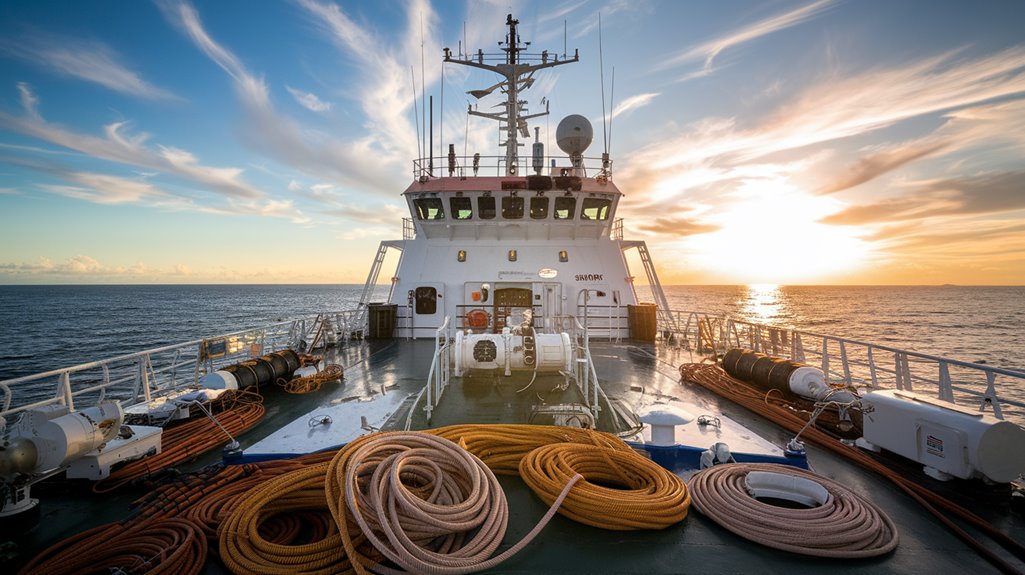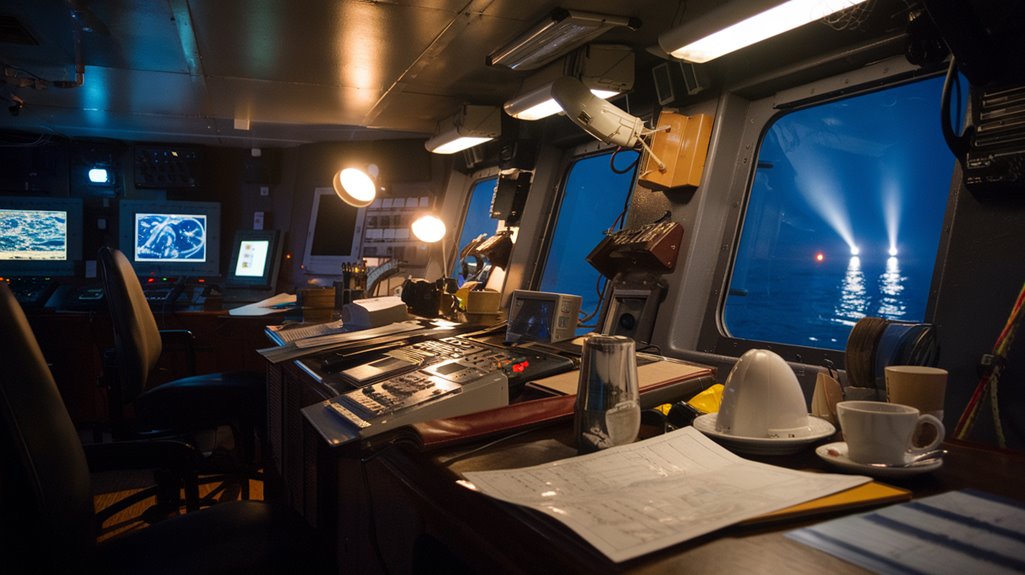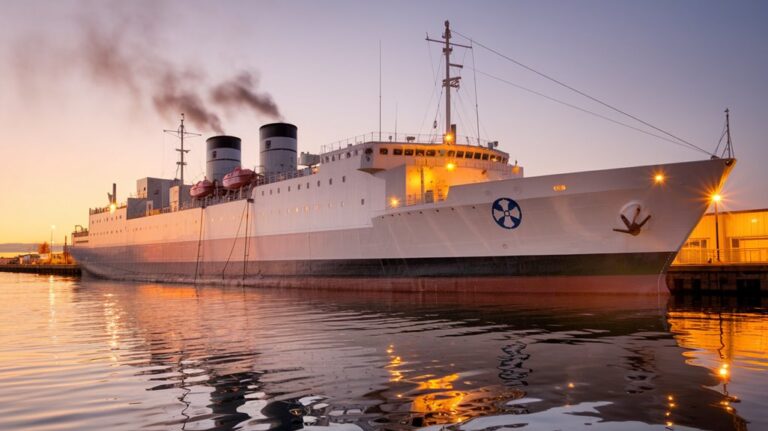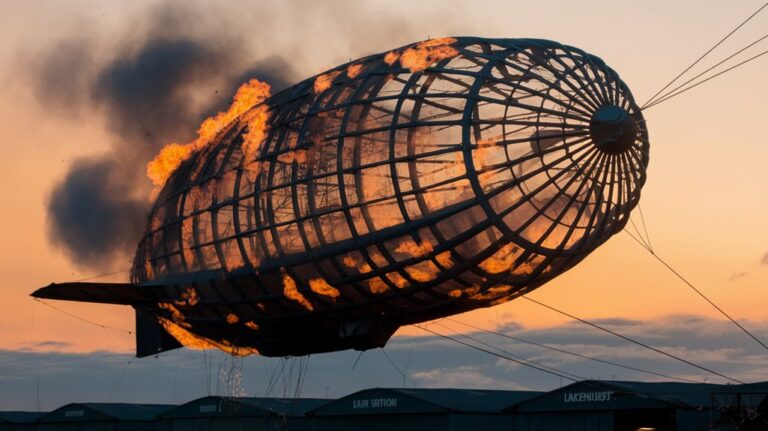They Found the Titanic by Searching for Lost Submarines
When Robert Ballard approached the U.S. Navy about finding two lost submarines in 1985, he had no idea he'd stumble upon history's most famous shipwreck. You might think you know the full story of the Titanic's discovery, but there's a fascinating Cold War twist that's remained in the shadows for years. It's a tale of military secrets, strategic deception, and how the quest to locate America's fallen submarines led to one of the greatest underwater finds of the 20th century.
The Hidden Military Mission Behind the Titanic Discovery
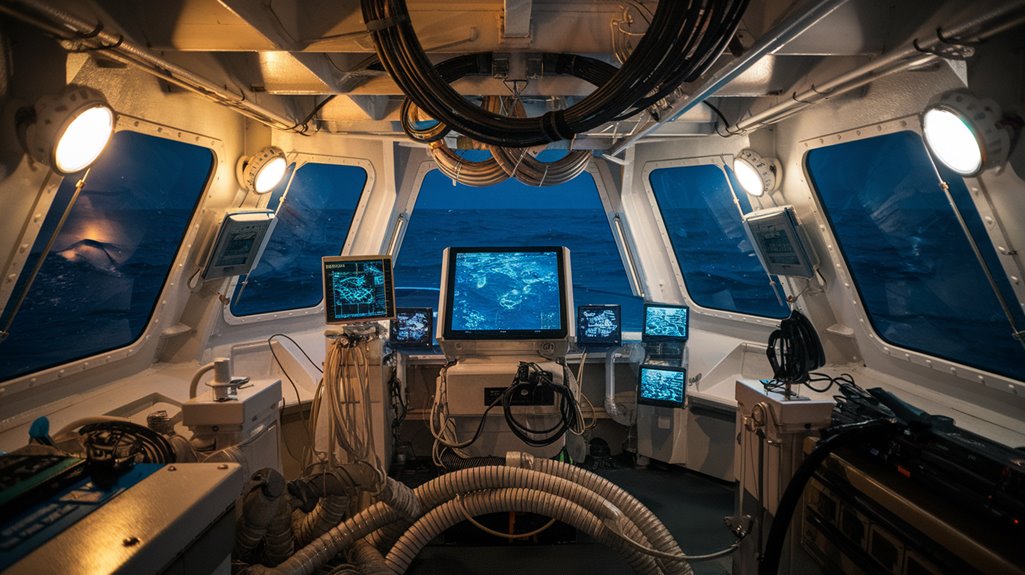
While the world celebrated the discovery of the Titanic in 1985, few knew that it wasn't the mission's true purpose.
Behind the headlines lay a complex web of Secret Operations orchestrated by the U.S. Navy to locate two sunken nuclear submarines: the USS Scorpion and USS Thresher.
The Historical Context of this mission was rooted in Cold War tensions.
You might be surprised to learn that the Navy funded the expedition primarily to investigate these submarines' nuclear weapons and reactors without alerting the Soviet Union.
They cleverly used the Titanic search as a cover story, requiring the team to locate the submarines first.
When Robert Ballard, a marine geologist and Navy officer, finally revealed the truth in 2008, it shed new light on one of history's most famous maritime discoveries.
Using advanced submersibles like the Alvin and Argo, Ballard's team conducted their covert mission.
With only 12 days remaining after exploring the submarine wrecks, Ballard and his team raced against time to find the Titanic.
The Lost Nuclear Submarines: USS Scorpion and USS Thresher
At the heart of the Navy's secret mission lay two devastating submarine tragedies: the USS Thresher and USS Scorpion.
These nuclear-powered vessels represented the pinnacle of submarine technology in the 1960s, but their losses would forever change naval history.
The Thresher, with its advanced BQQ-2 sonar and S5W reactor, sank in 1963 during deep-diving tests, claiming 129 lives. The submarine was originally designed to be fast and quiet, capable of reaching speeds up to 33 knots while hunting Soviet submarines.
Five years later, the Scorpion disappeared with 99 crew members aboard. The Navy used the Titanic search as a covert operation to locate these submarines.
You'll find these sobering statistics even more significant when considering:
- Both submarines were nuclear-powered, raising radiation concerns
- The Thresher's loss led to the vital SUBSAFE program
- The Navy kept the search classified for decades
- They sank in different locations along the Atlantic
- Their discoveries helped advance deep-sea exploration techniques
How Cold War Secrecy Shaped the Expedition
Since the height of the Cold War demanded absolute secrecy, the US Navy crafted an ingenious cover story around the Titanic expedition to shield their true mission of investigating two sunken nuclear submarines.
You wouldn't have known it at the time, but these covert operations were carefully orchestrated to keep Soviet eyes away from America's true intentions.
The joint mission between WHOI and IFREMER helped maintain the appearance of a purely scientific venture.
Even the media was kept in the dark, believing they were simply covering a search for history's most famous shipwreck.
President Reagan himself approved using the Titanic as cover, while Dr. Robert Ballard couldn't reveal the truth until 2018.
The discovery happened over 12,000 feet below the ocean's surface, requiring specialized equipment and expertise to reach such extreme depths.
The historical implications of this deception are significant – it shows how civilian scientific projects could be masterfully woven into military objectives, highlighting the complex nature of Cold War intelligence gathering.
Following Debris Trails: From Submarines to the Titanic
After discovering two nuclear submarines, Dr. Robert Ballard applied the same debris patterns search technique to locate the Titanic.
You'll find it fascinating that instead of looking for the ship itself, his team focused on finding scattered debris on the seabed using advanced search technology.
The success of this method relied on these key elements:
- Camera systems proved more effective than sonar in distinguishing man-made objects
- Continuous monitoring through shifts of watchers aboard the Knorr
- Following trails of debris similar to submarine search patterns
- Identifying essential pieces like the 1911 boiler
- Using the Argo's towed camera system for detailed seabed scanning
When debris started appearing on the Knorr's screens after a week of searching, they knew they were getting close. The first major breakthrough came when they spotted debris at 12:48 am on September 1st, 1985. This same technique was recently used to locate the tail cone debris of the Titan submersible near the Titanic wreck.
This approach ultimately led them to one of history's most significant maritime discoveries.
When Science Meets Covert Operations: The Double Mission
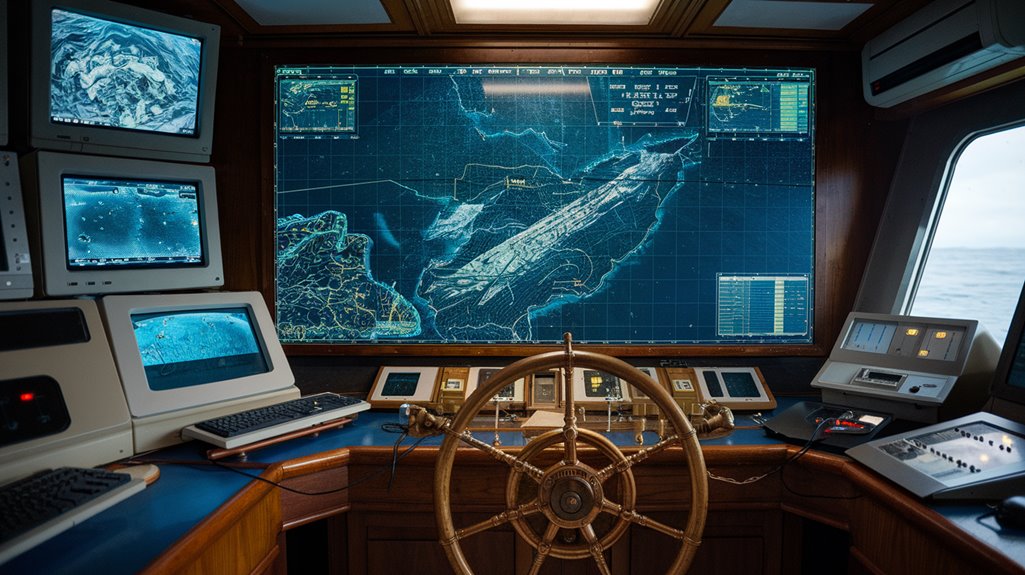
Behind the famous discovery of the Titanic lies a fascinating secret: Dr. Robert Ballard's mission wasn't just about finding a legendary shipwreck.
You might be surprised to learn that his expedition served as cover for a classified Navy operation to locate two nuclear submarines, the USS Thresher and USS Scorpion.
This dual-purpose mission showcases how scientific collaboration and covert technology can work together.
 plausible deniability under Section 503(e) of the National Security Act, this mission allowed officials to maintain secrecy about its true purpose.
plausible deniability under Section 503(e) of the National Security Act, this mission allowed officials to maintain secrecy about its true purpose.
The operation demonstrated how scientific research could effectively mask covert operations while advancing both military and civilian goals.
This kind of mission exemplifies how covert instruments can provide strategic options when direct military action is unsuitable or undesirable.

